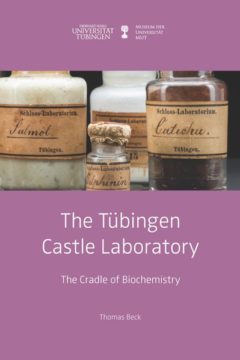In 1818 the university installed a chemistry lab in the former kitchens of the Hohentübingen Castle. It soon became one of the first research sites of biochemistry worldwide. During the era of Felix Hoppe-Seyler, appointed professor in 1861, the field of biochemistry in Tuebingen conducted outstanding research. He examined the red blood pigment and named it “hemoglobin.” In 1869, his student, Friedrich Miescher made the groundbreaking discovery of a substance he named “Nuklein” while working in the castle laboratory. Today this substance is known as DNA and RNA, the carriers of all genetic information. This little monograph illustrates the history of biochemistry in Tuebingen and puts the most important exhibits of the museum space “Castle Laboratory Tuebingen” into historical context.
- Veröffentlicht am Montag 10. Oktober 2016 von Museum der Universität Tübingen - MUT
- ISBN: 9783981794724
- 90 Seiten
- Genre: Natur, Naturwissenschaft, Sachbücher, Technik
